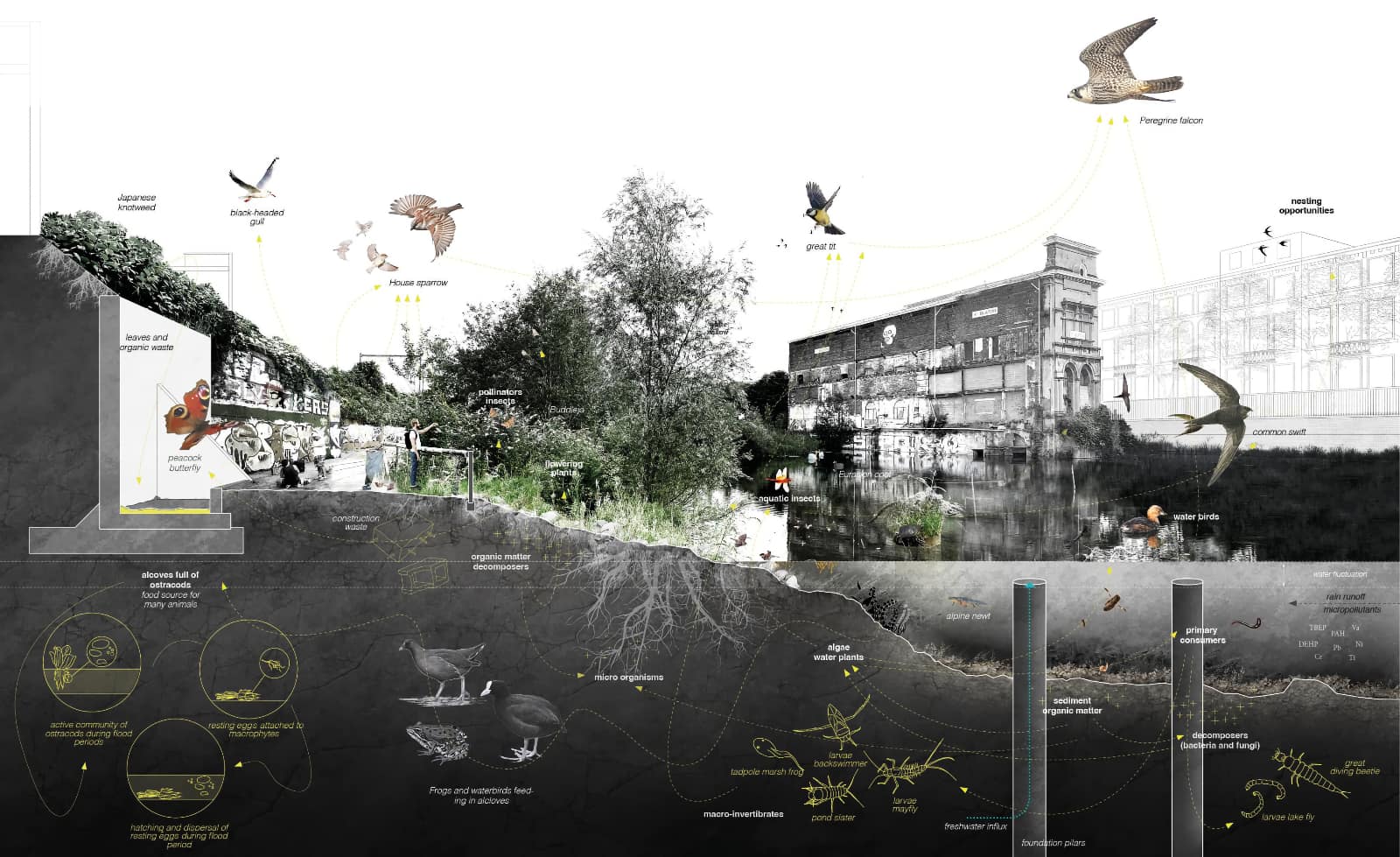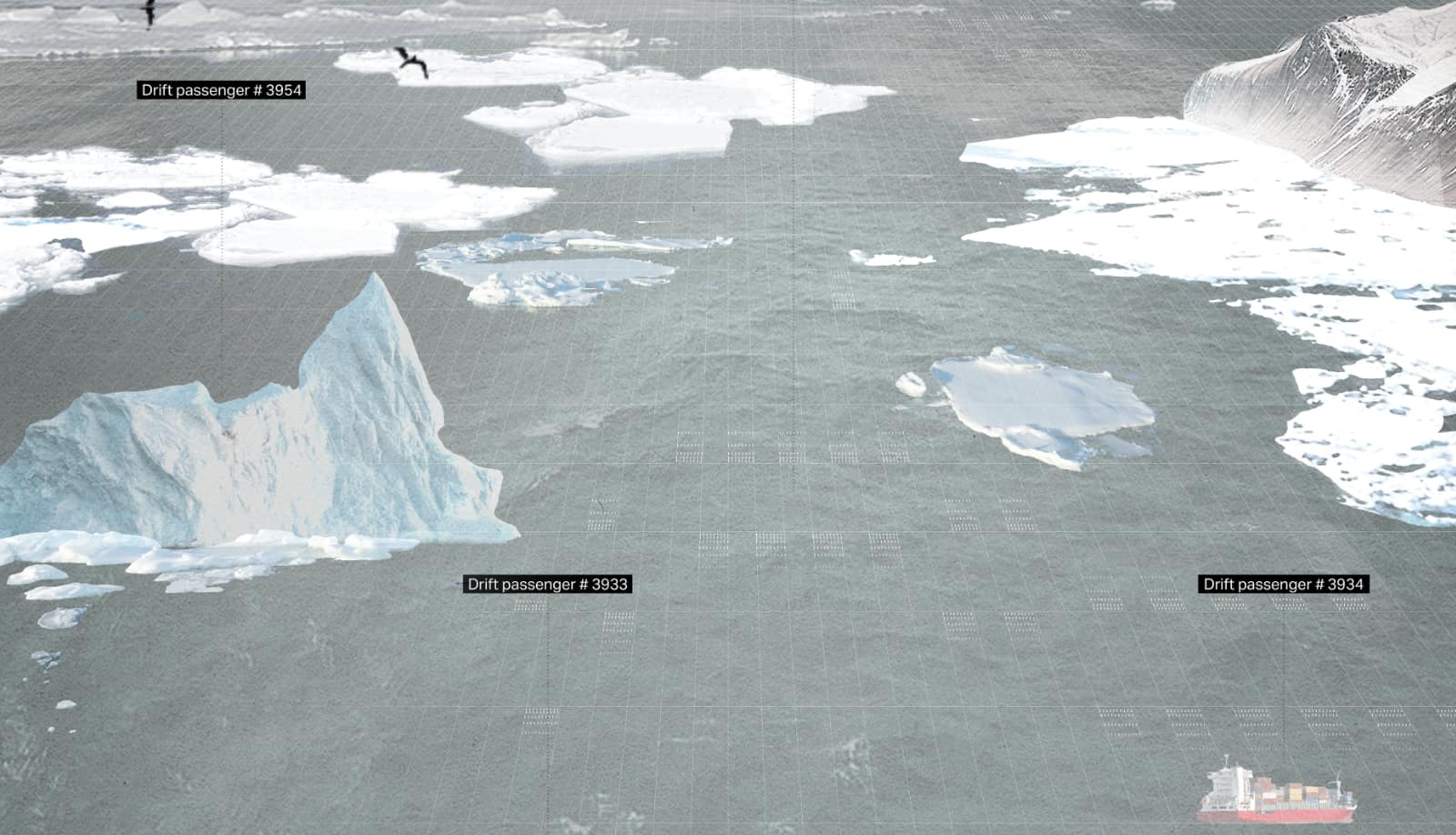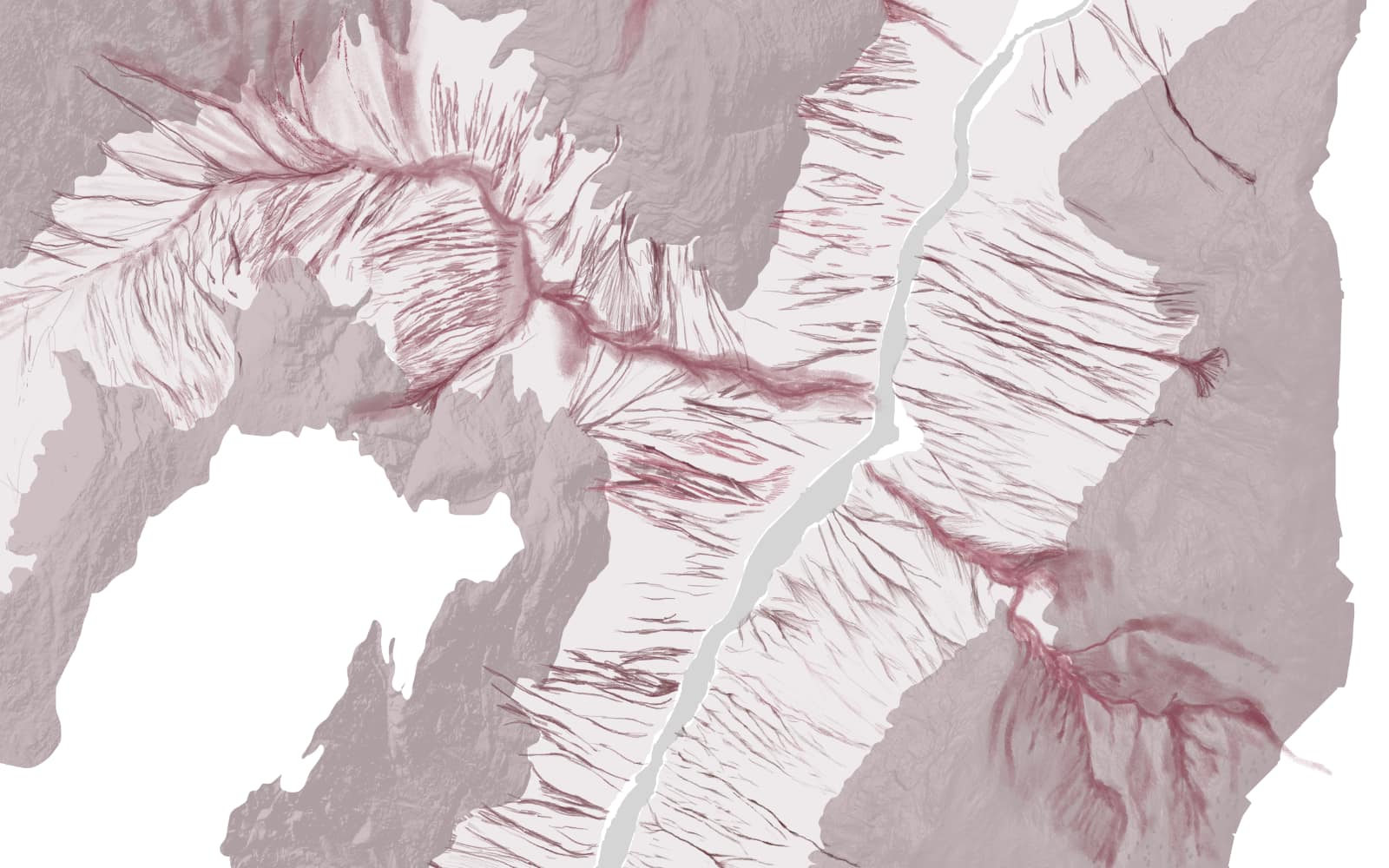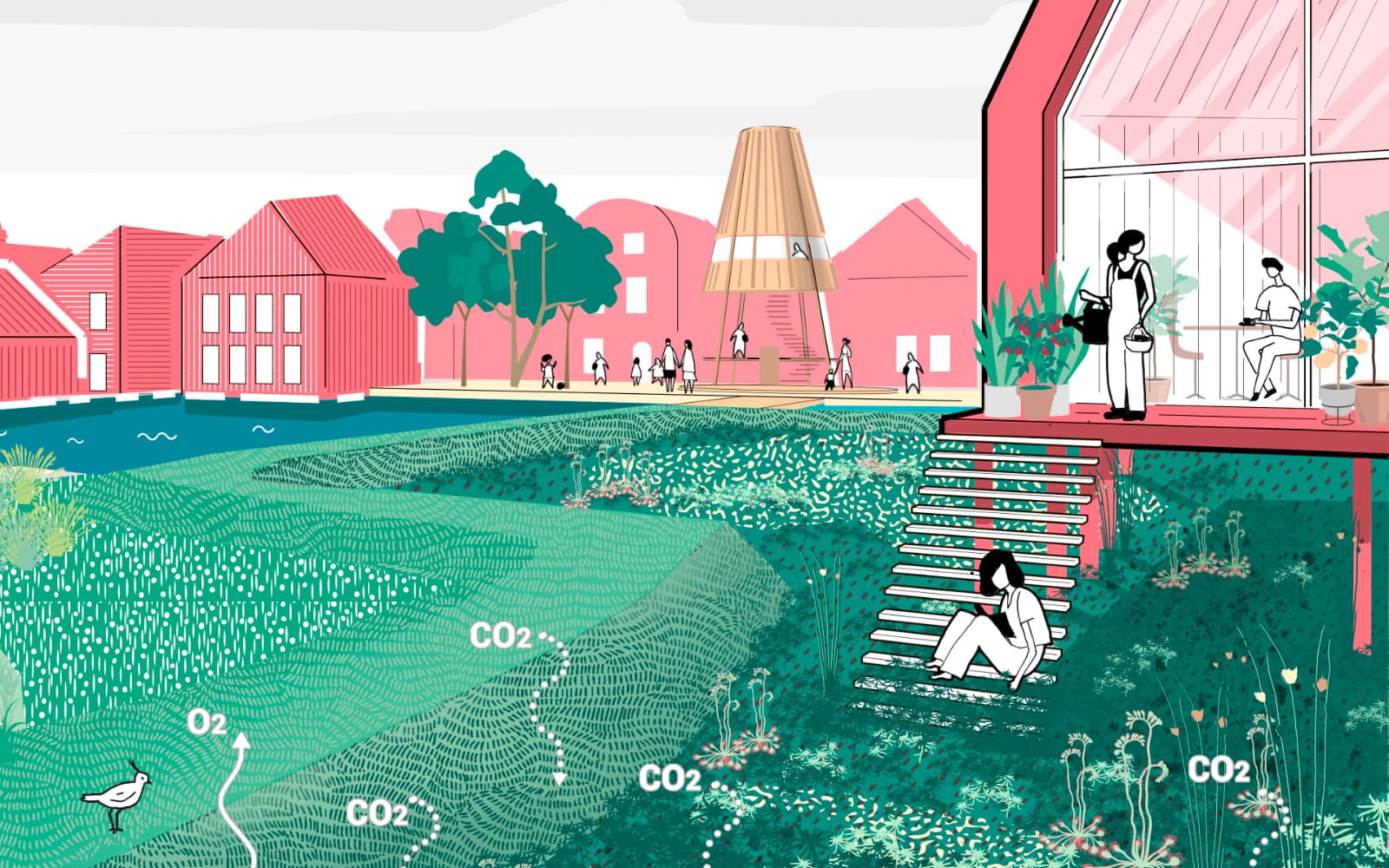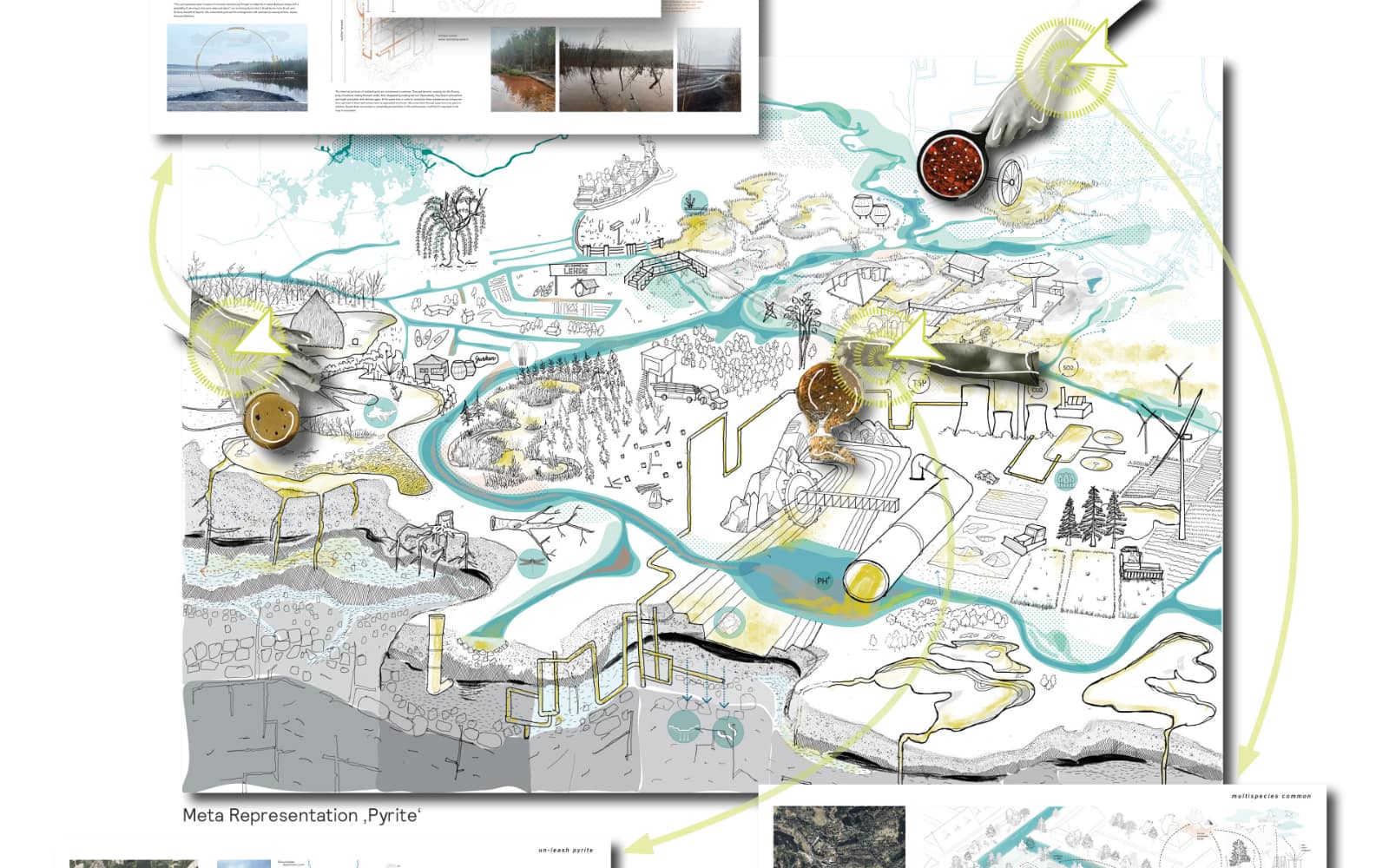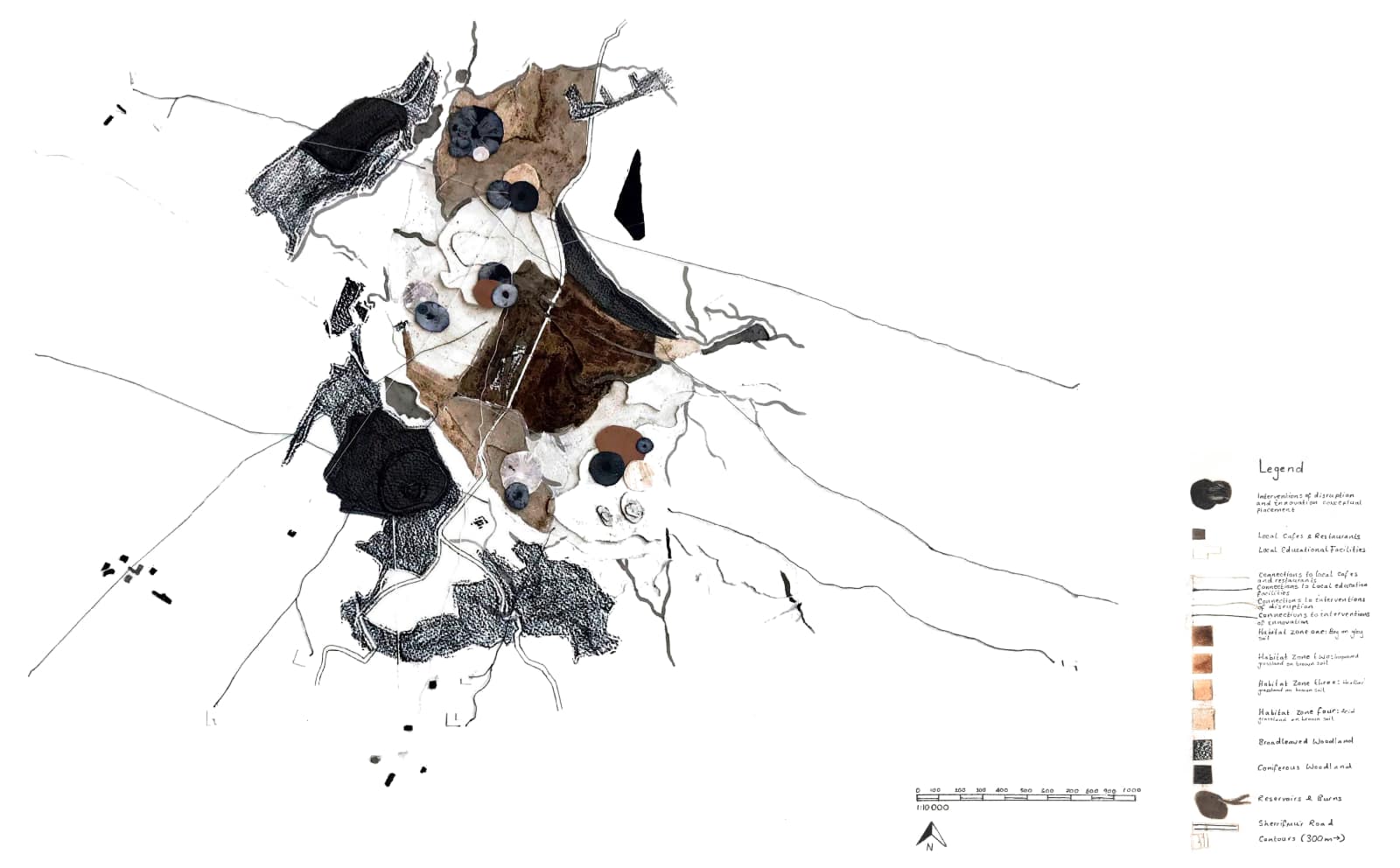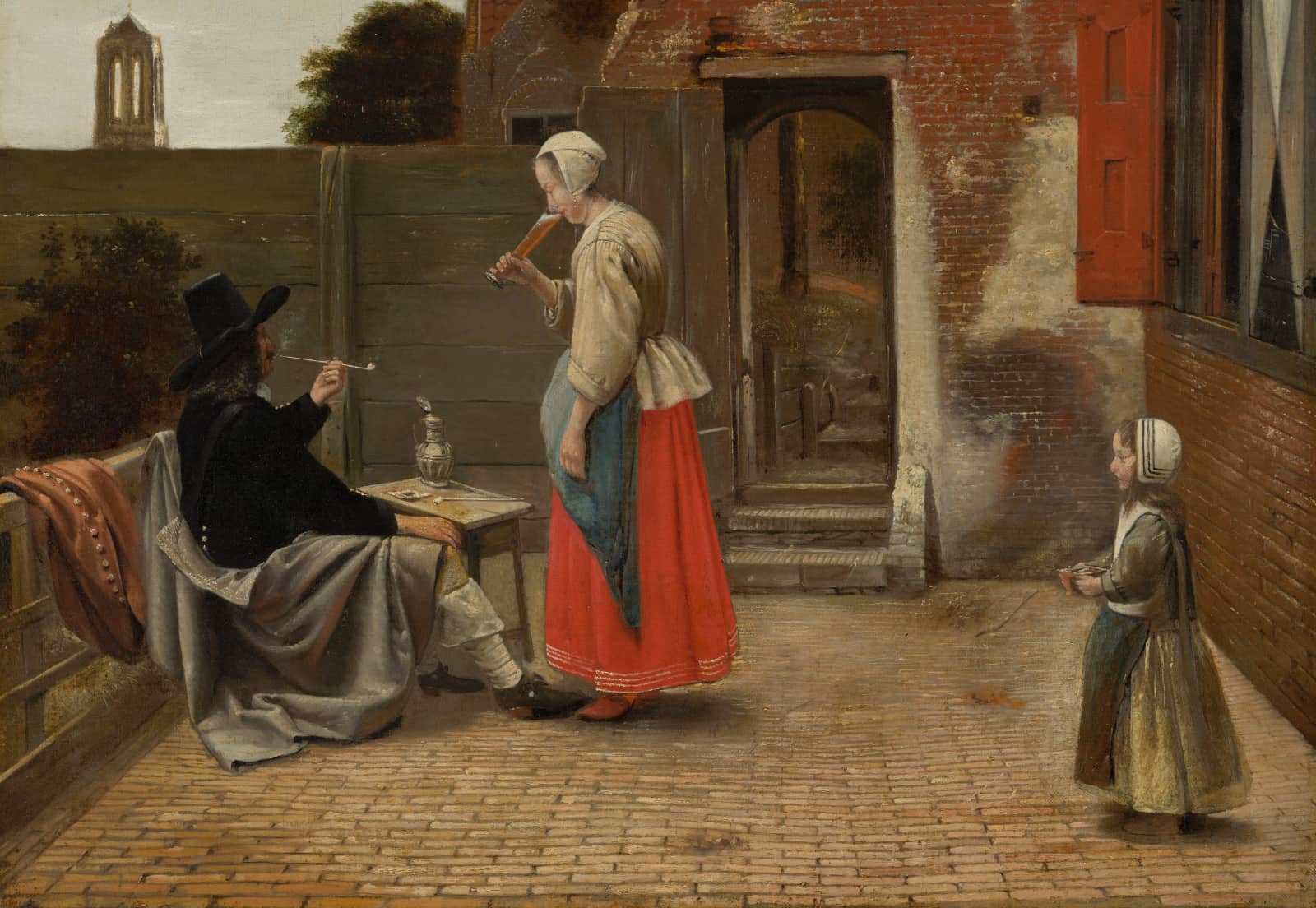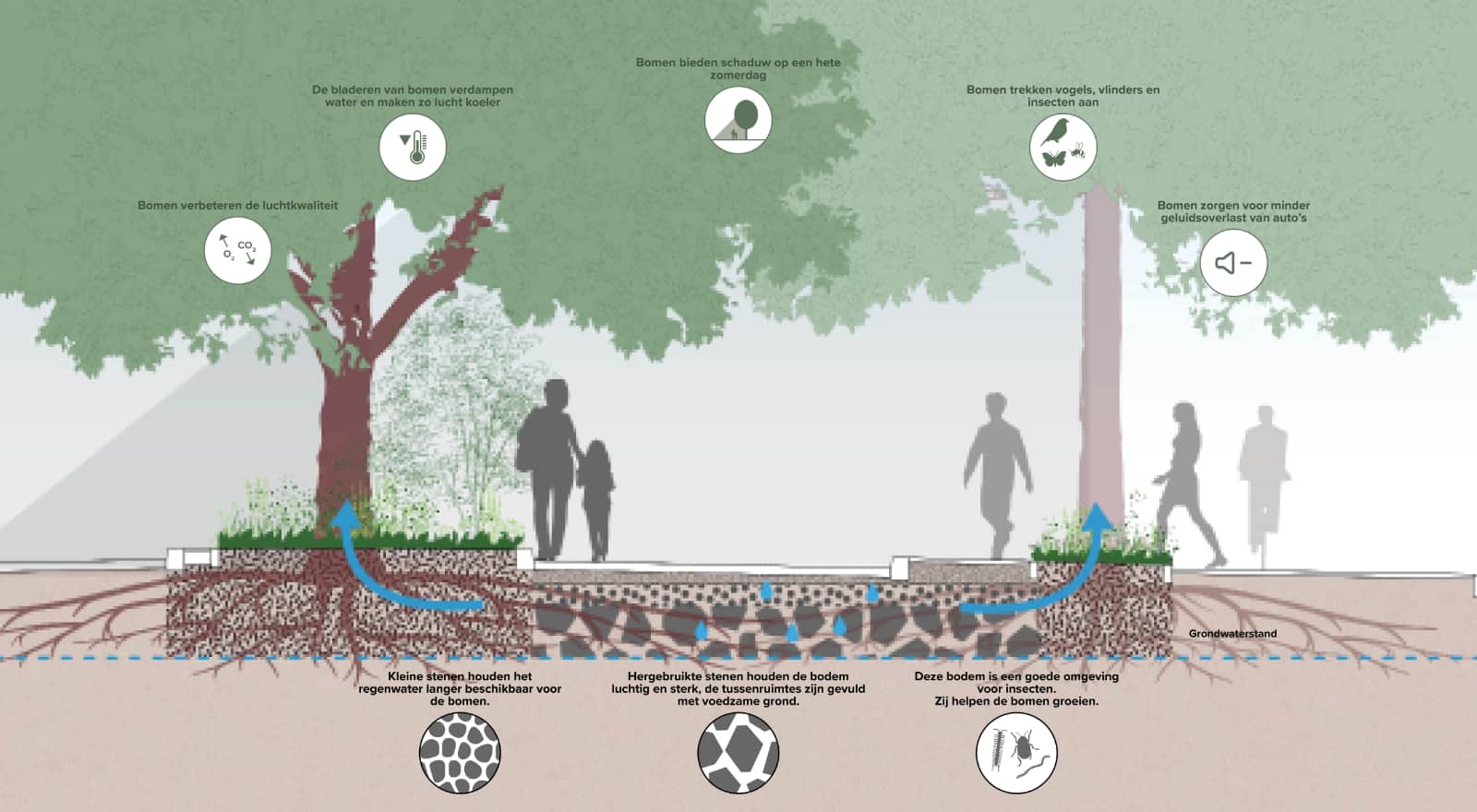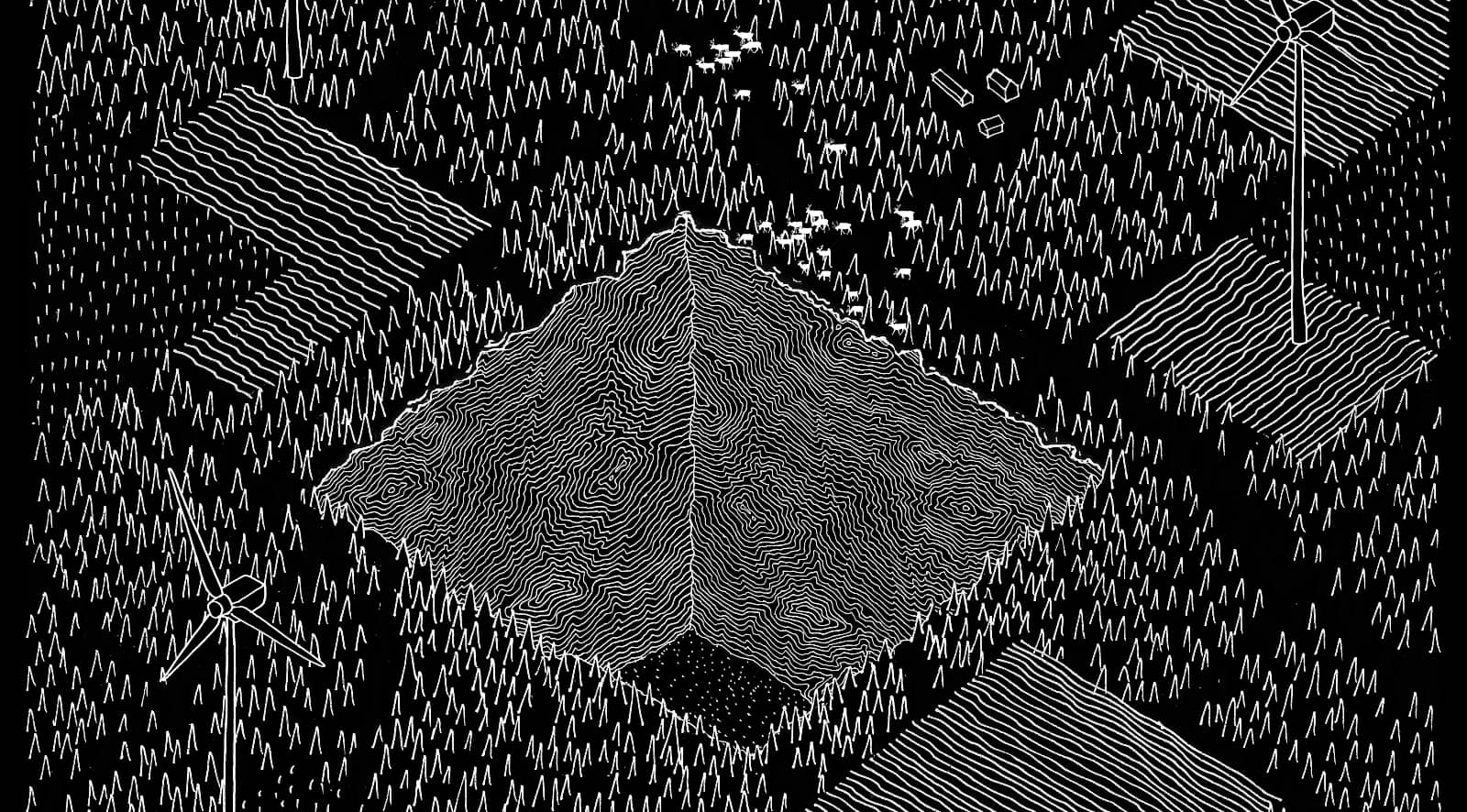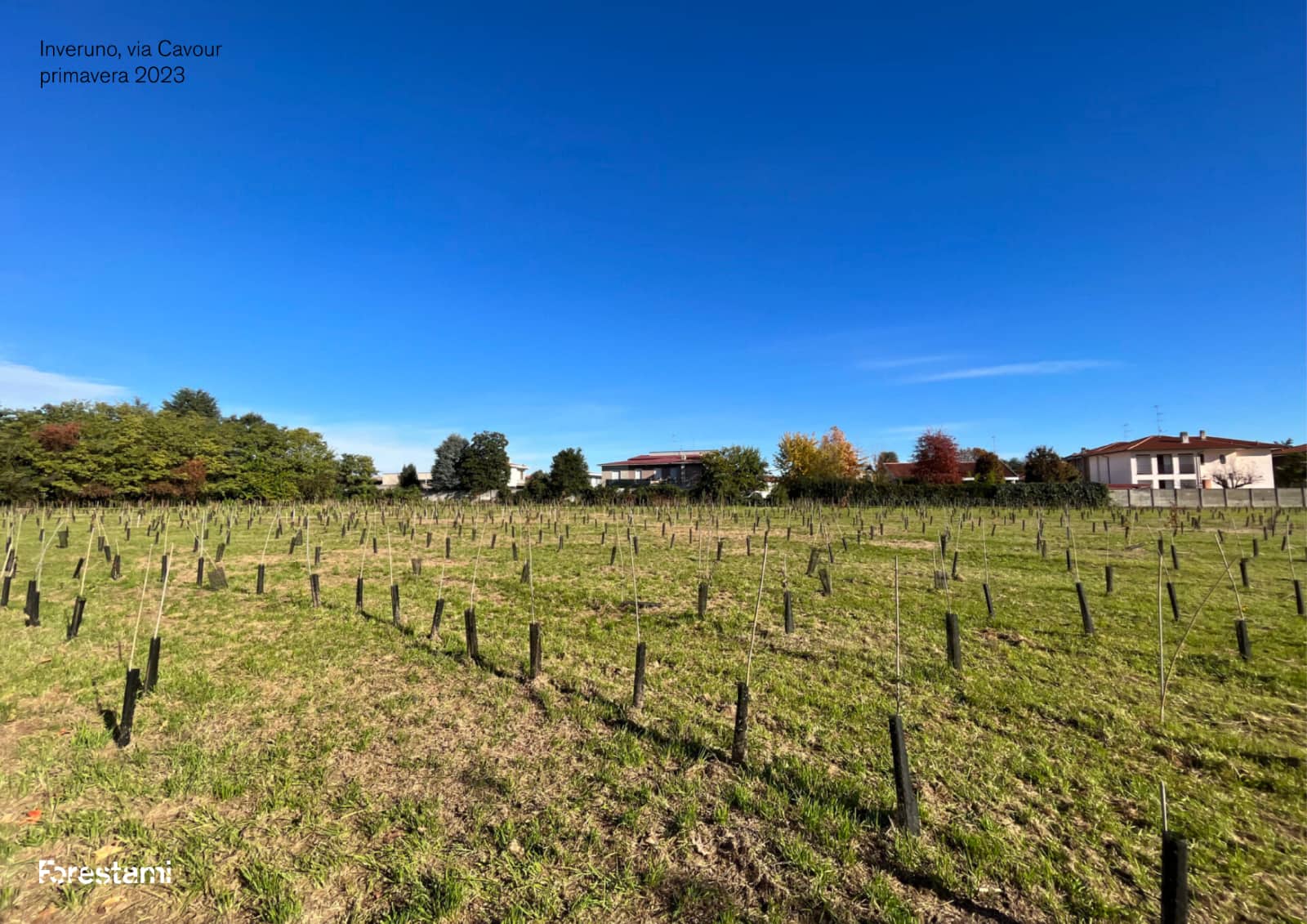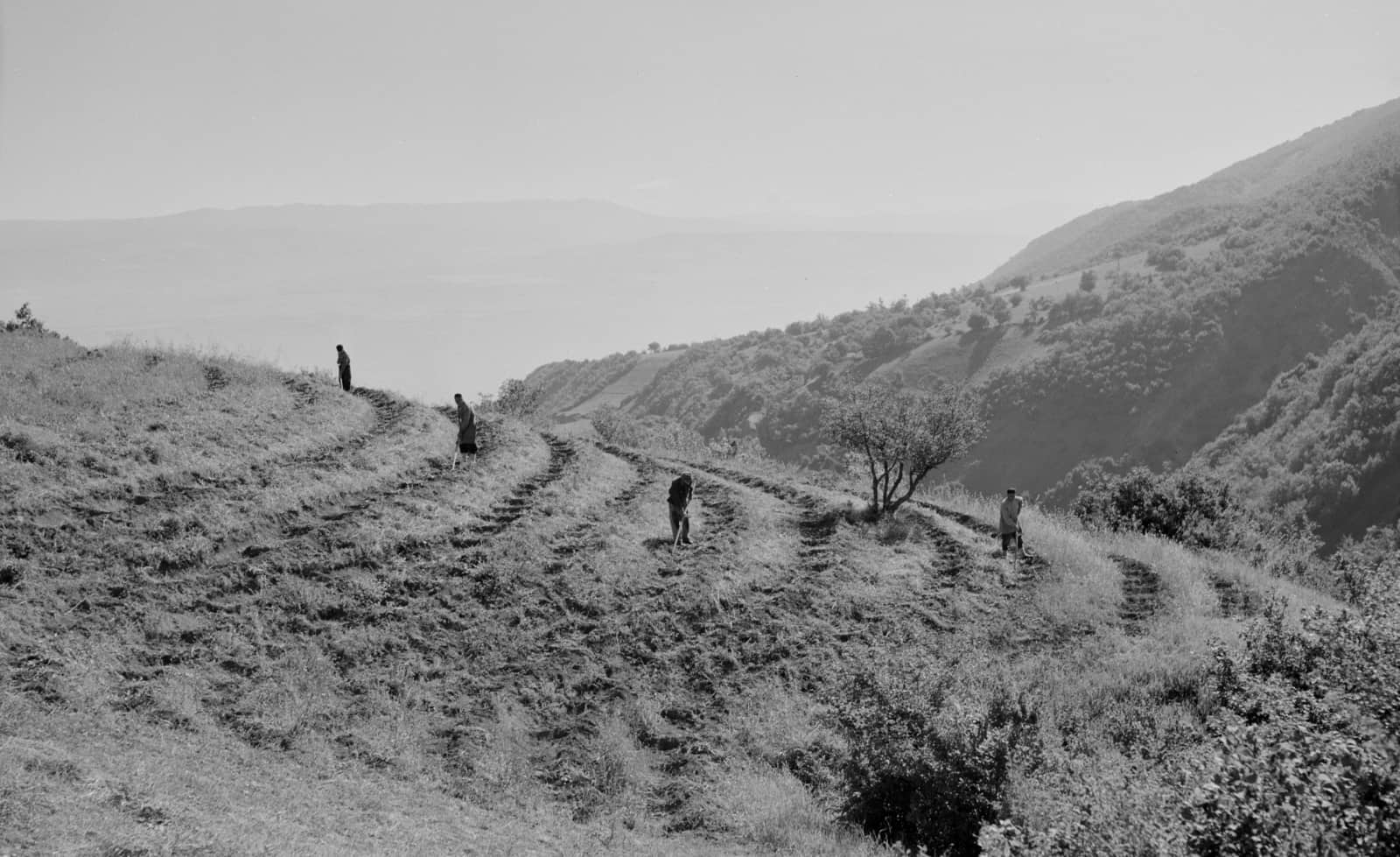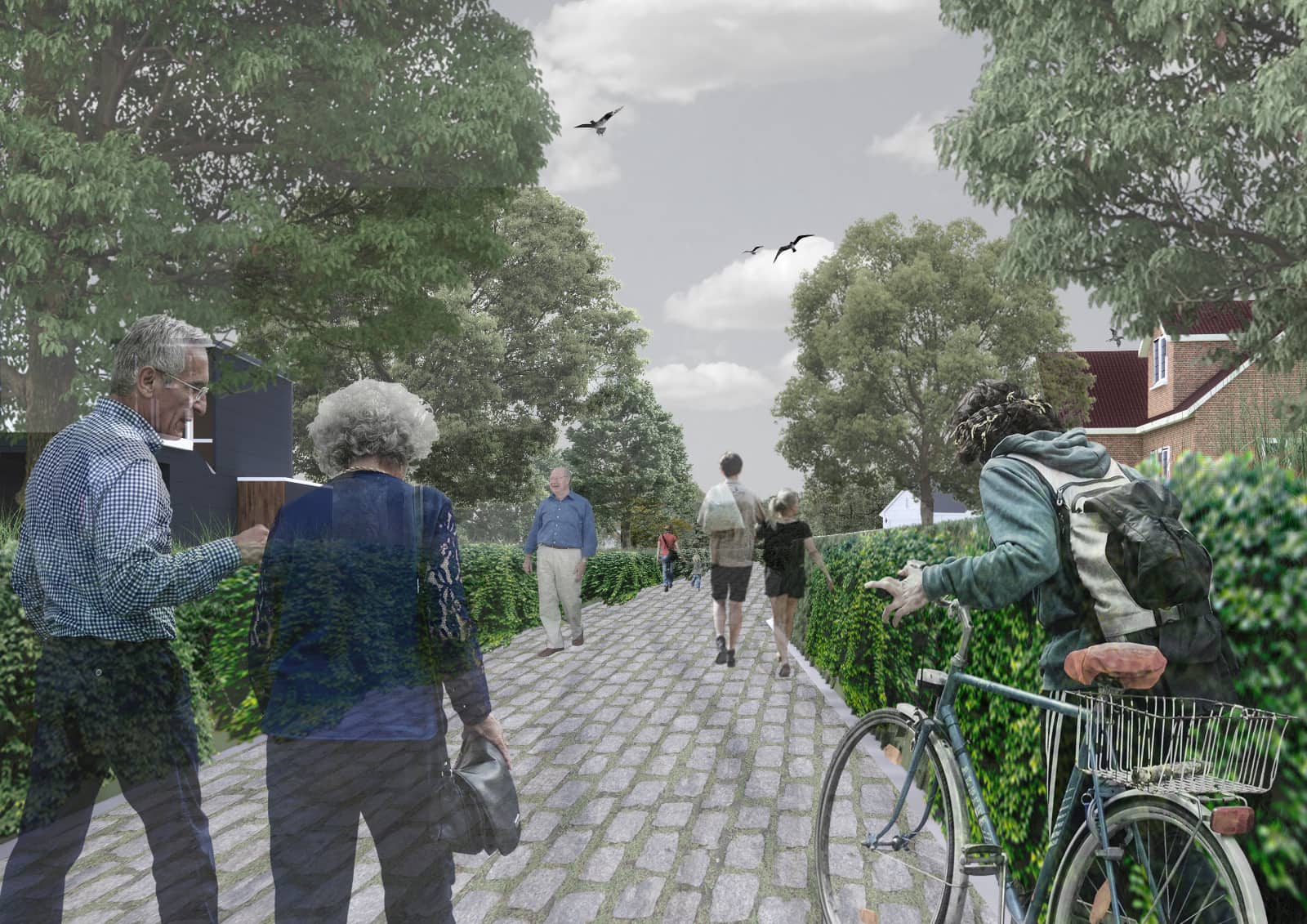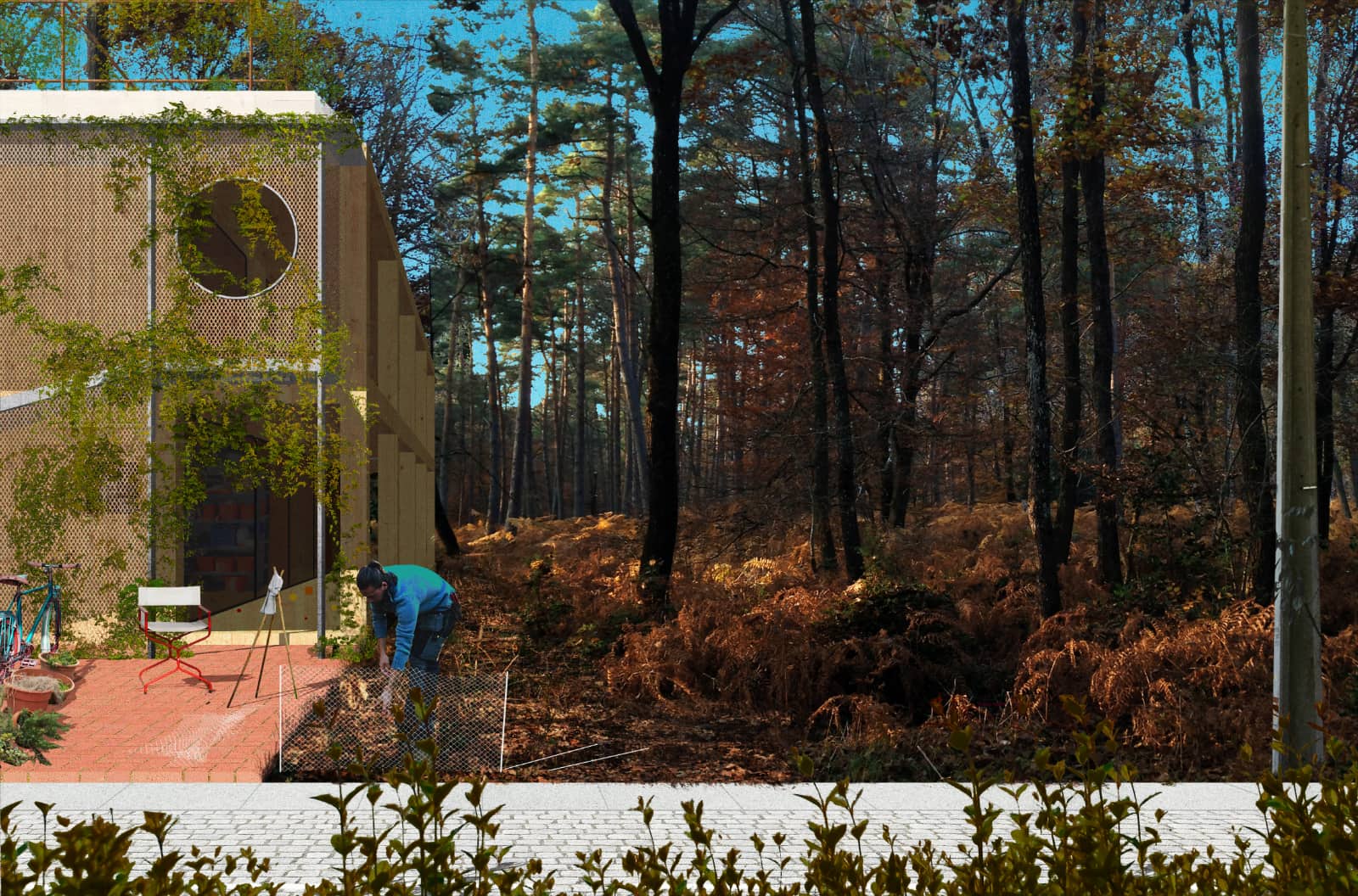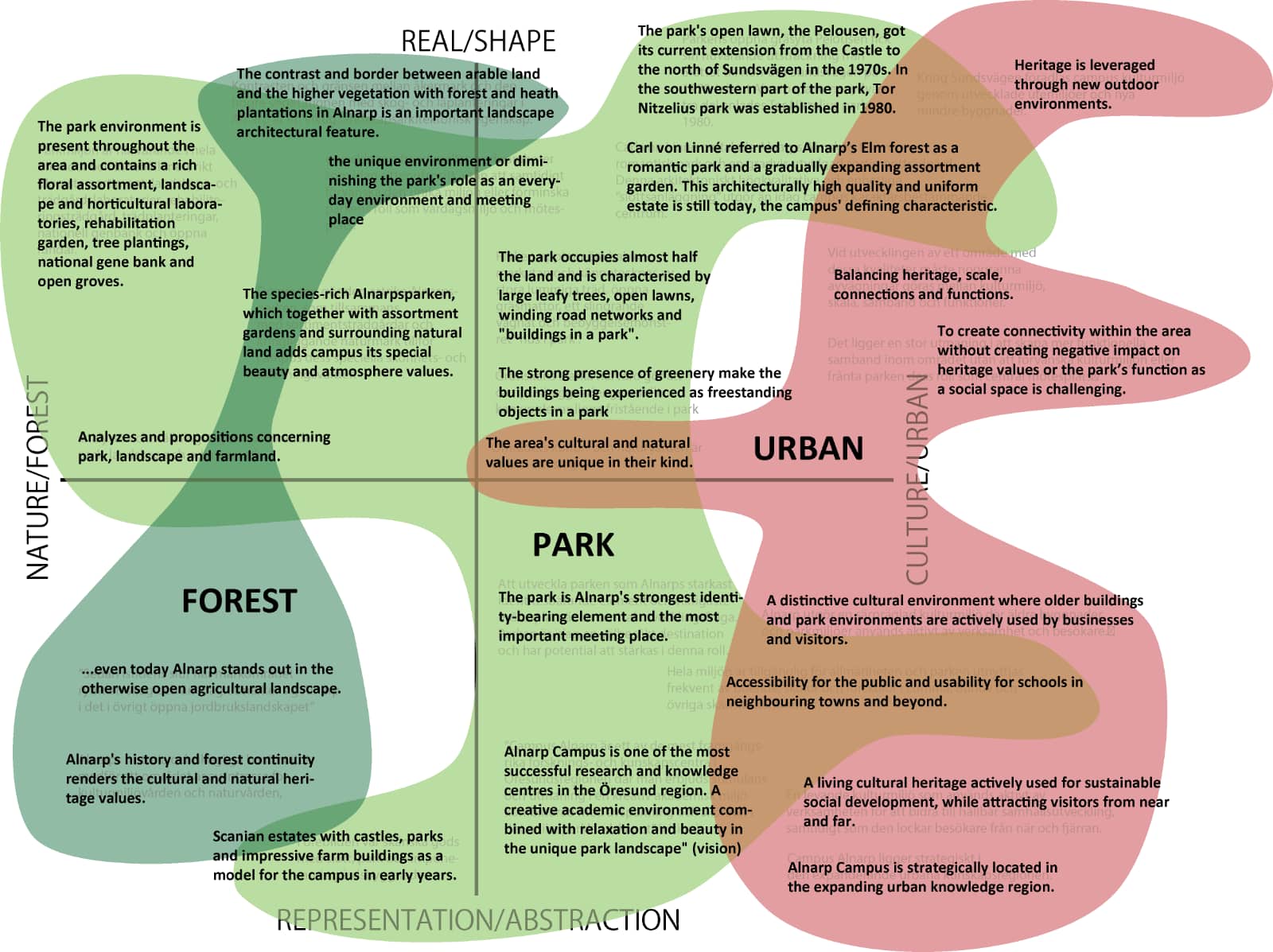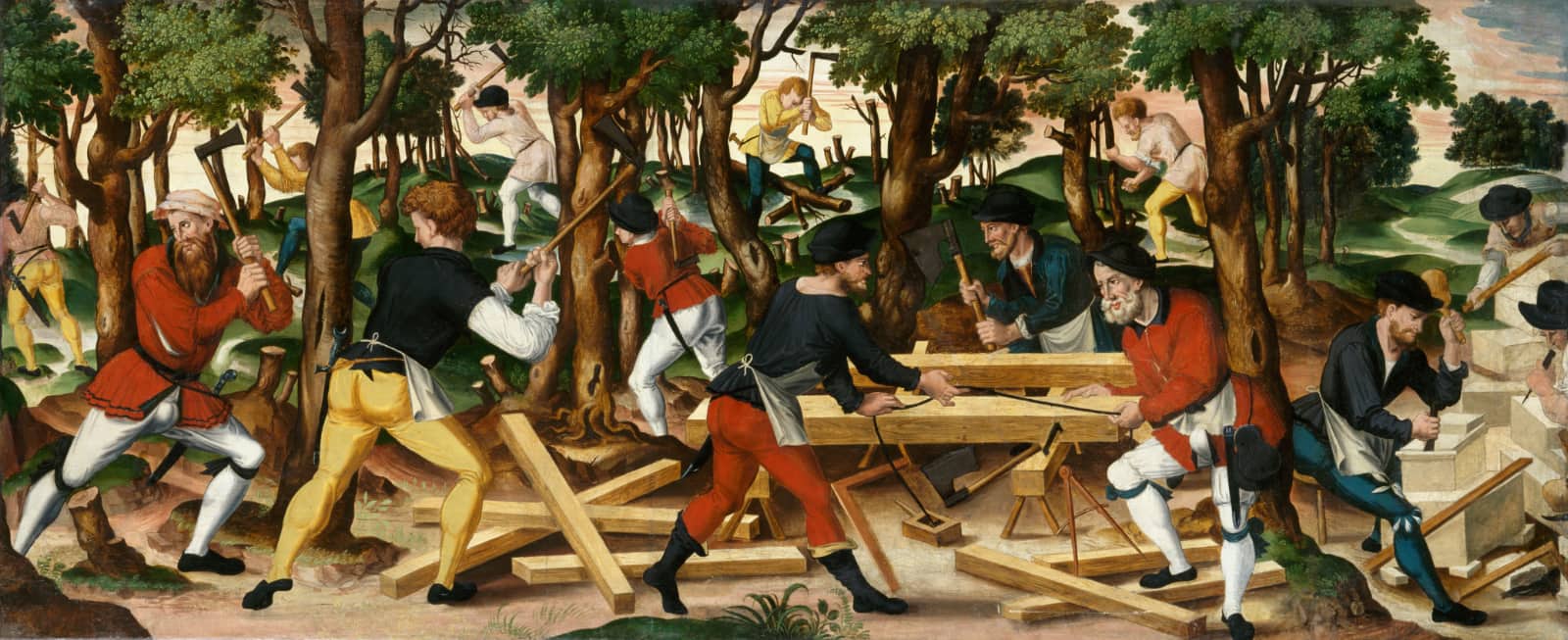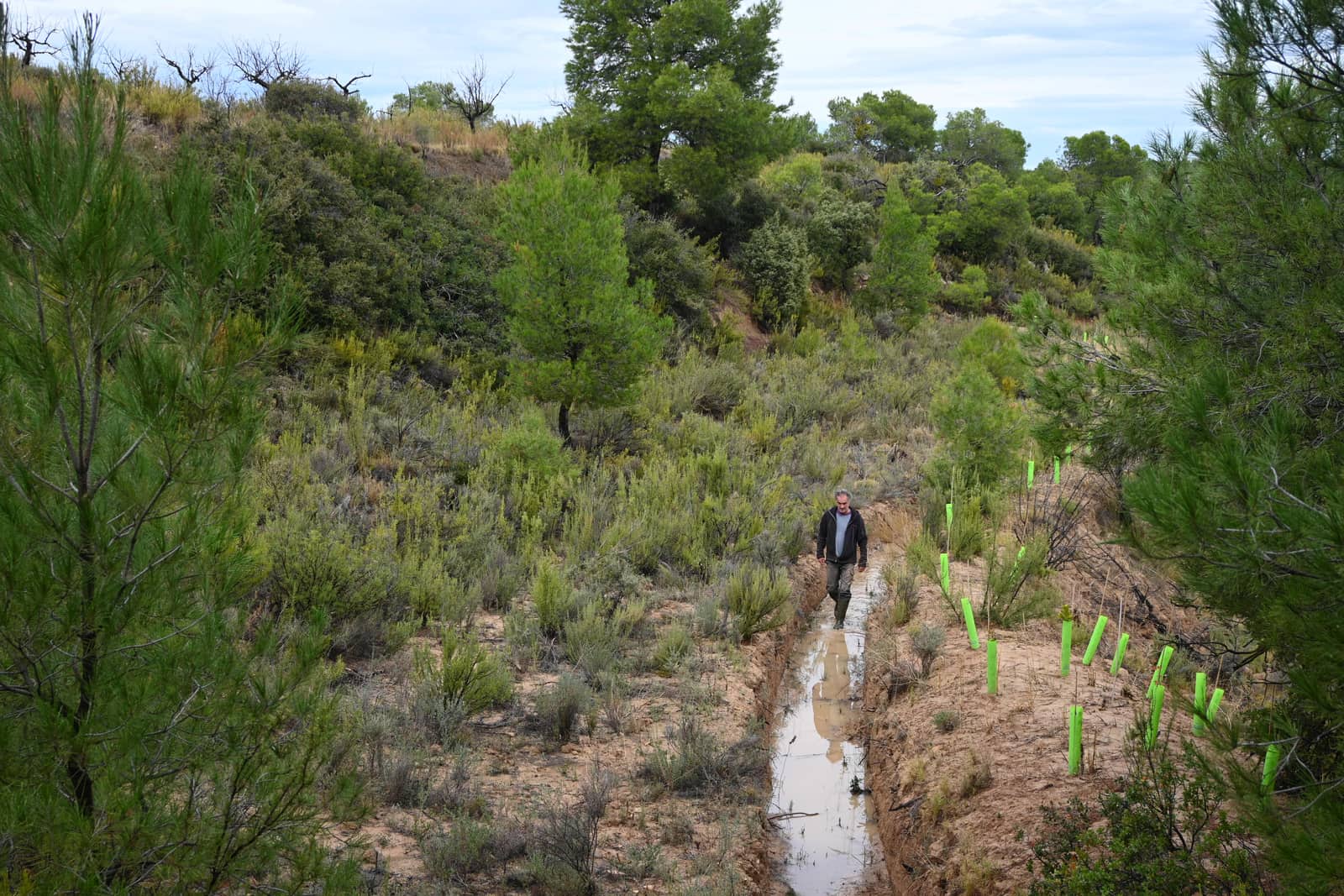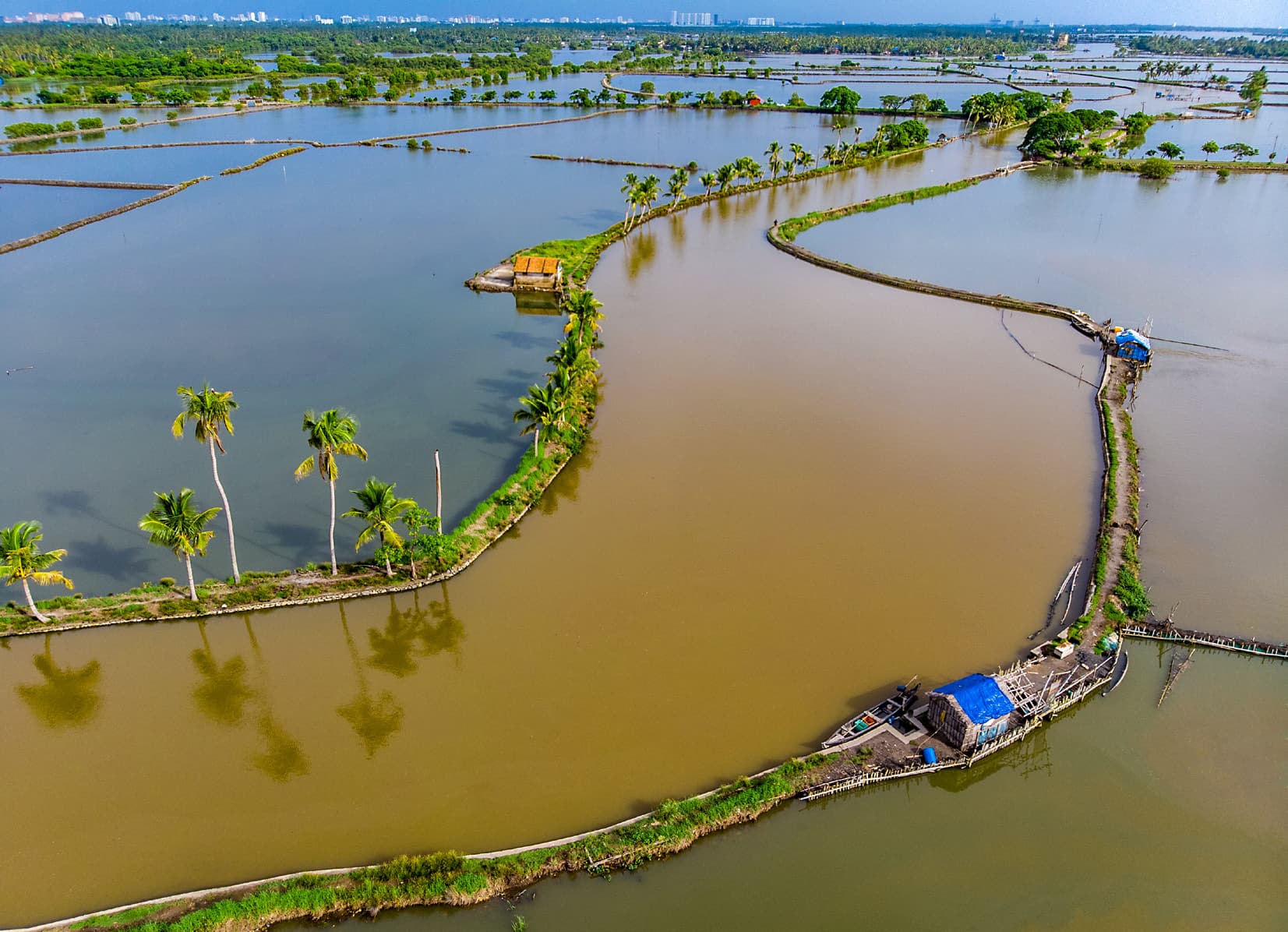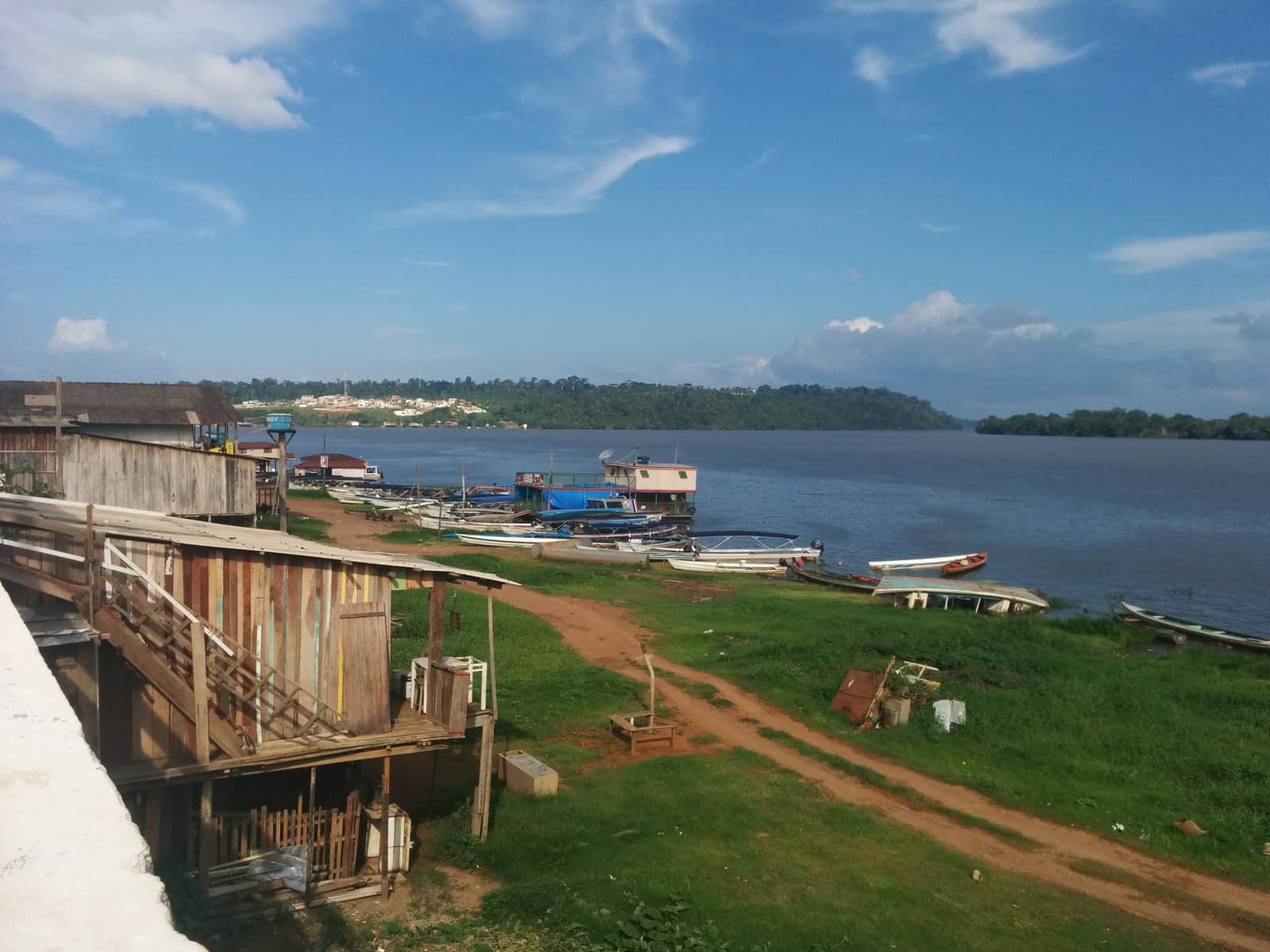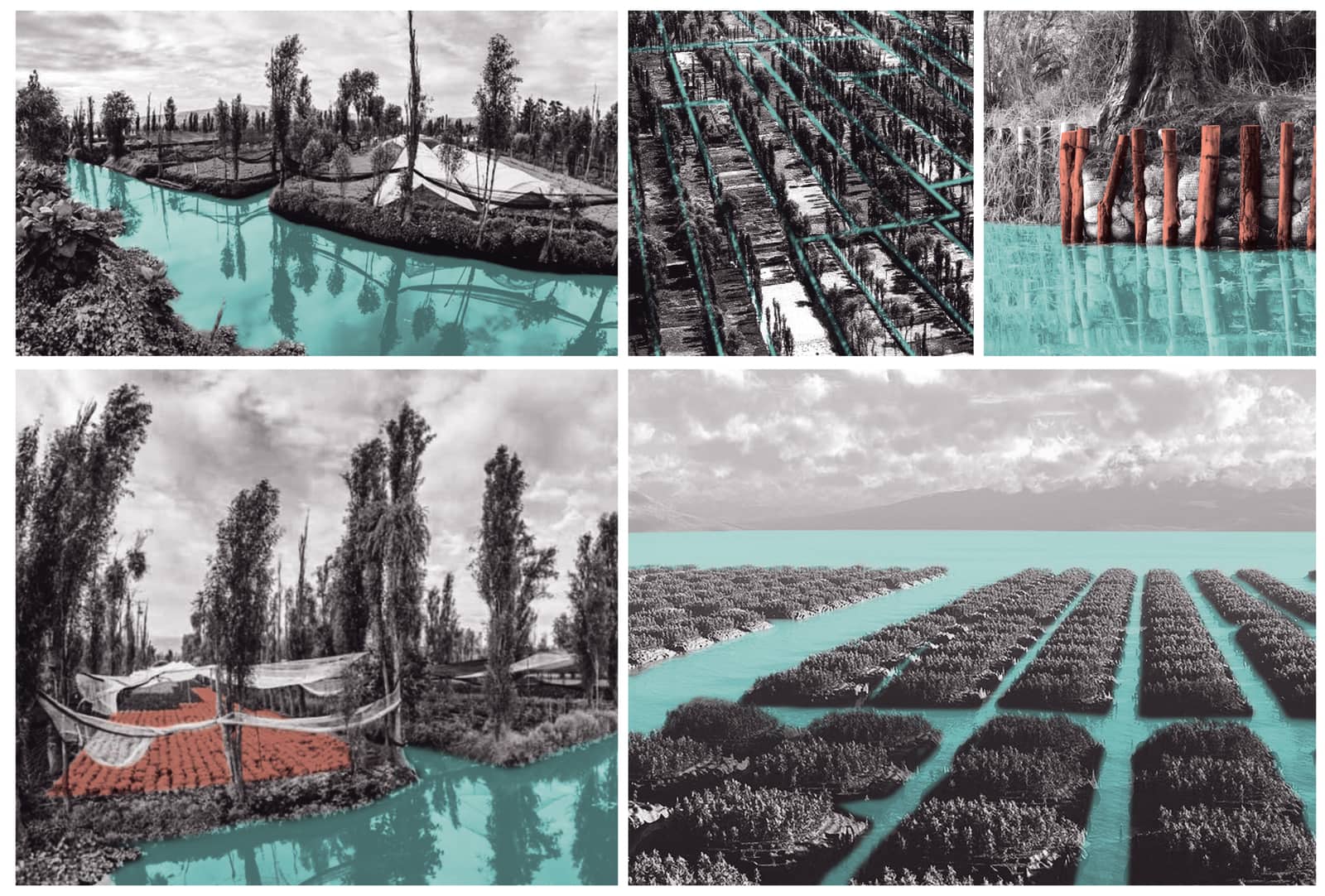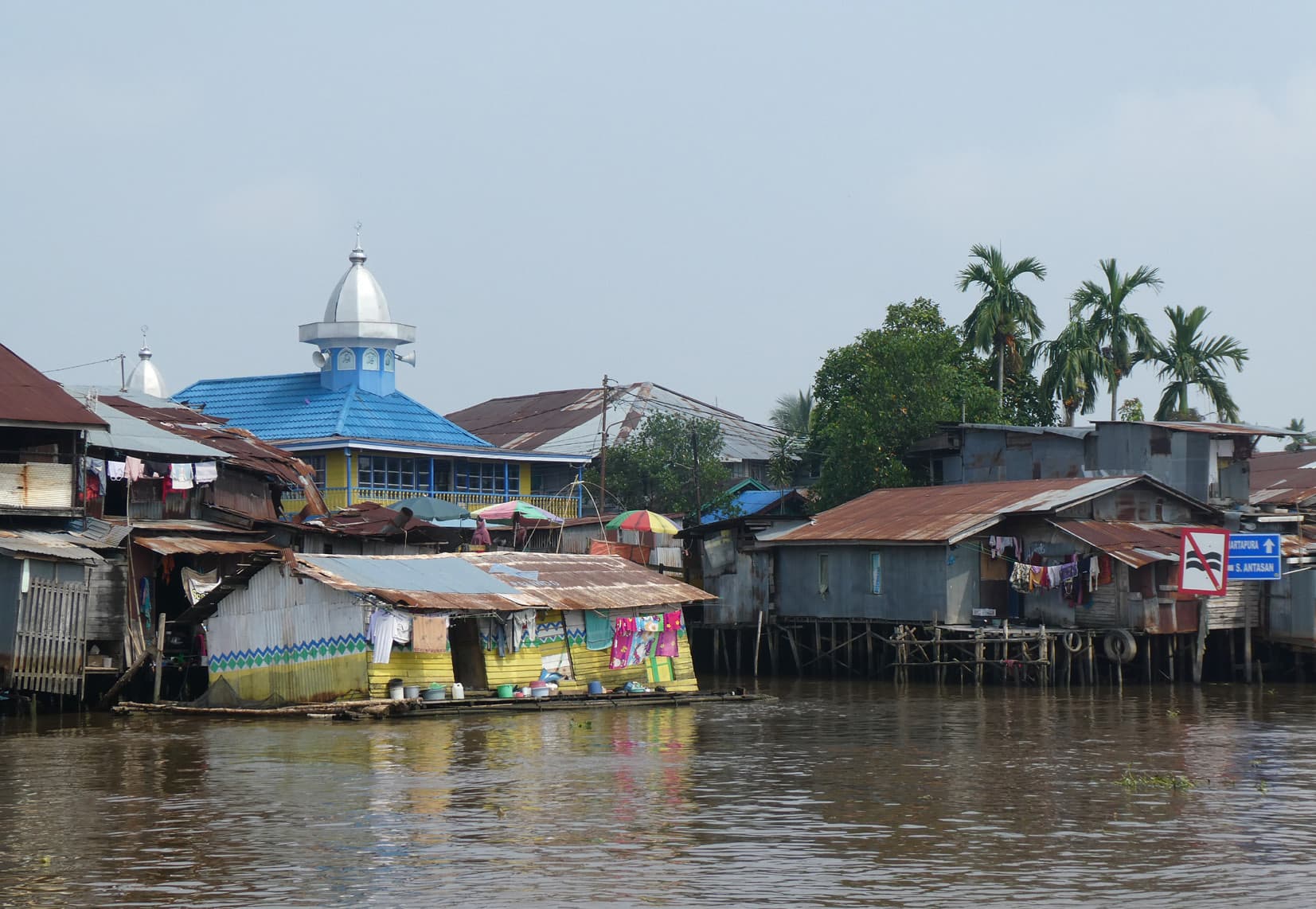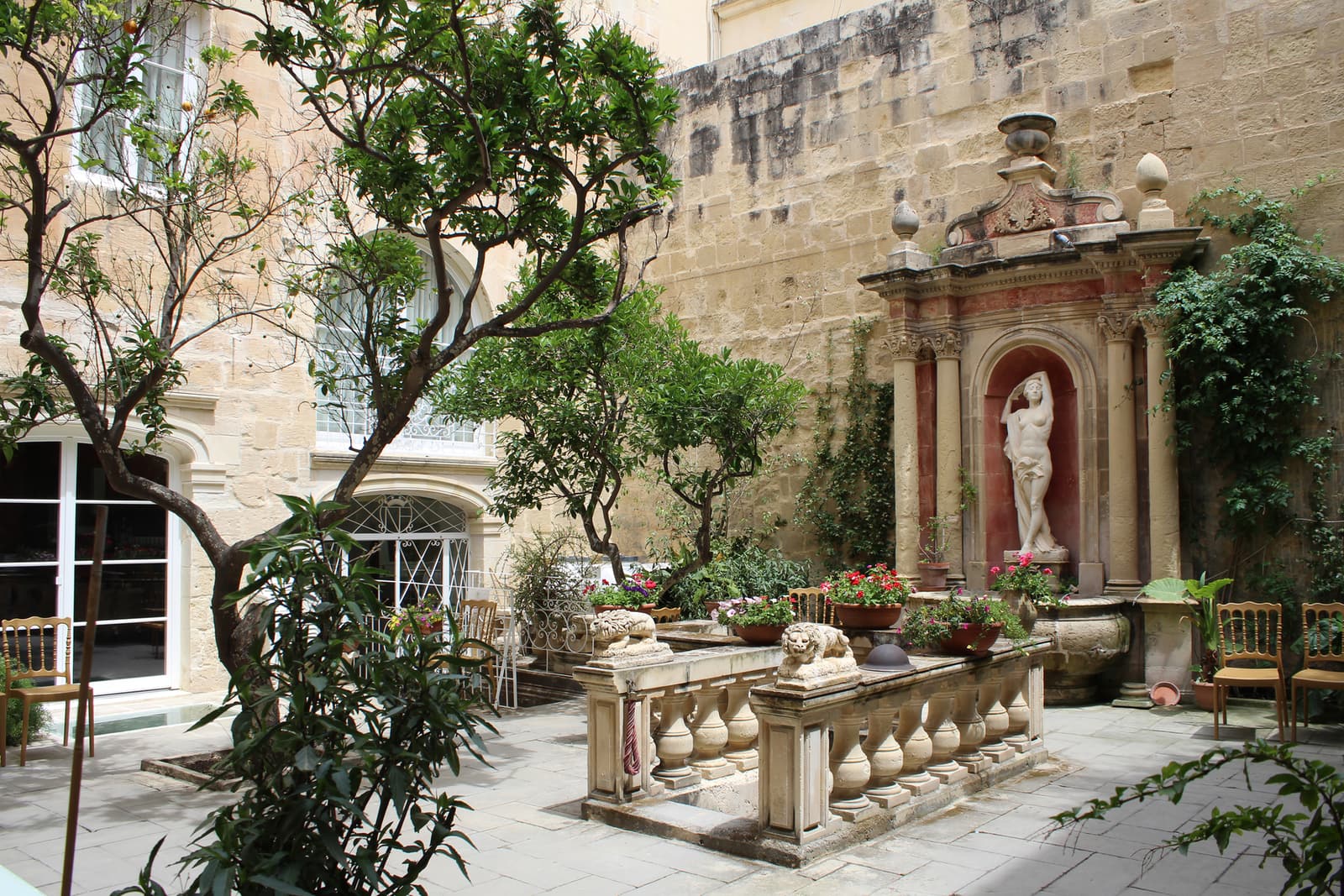Landscape Metropolis
All Items
-
In the thread Landscape Metropolis, SPOOL addresses the interrelation between urban, infrastructural, rural, and living formations as a dynamic, intertwined, and layered landscape structure. Triggered by the profound changes of the Anthropocene, the complexity of the metropolitan landscape asks for reorientation when addressing physical space as well as spatial investigation and theory, in terms of aesthetic appreciation, designerly concepts, guidelines for planning and governance, and design theoretical understandings. Spatial design responses to this growing complexity...
-
This paper explores directions for a more-than-human conceptualization of urban space. We present five ‘multispecies collages’ for Marais Wiels (Wiels Marshes) in Brussels. This brownfield, inhabited by a wide range of animal species, has been the subject of various construction plans and debates over the past 20 years. In the article, we will first argue that the existing imaginaries for the site, as propelled by the designers and policymakers, fail to acknowledge its multispecies complexity. Such blindness can be linked to the analytical frameworks and representational methods...
-
This visual essay explores the translation of complex environments through representations with attributes that are summarized as ‘interdimensional’. These attributes are not elaborated yet, but the term emphasizes that these representations integrate different dimensions of experiencing and understanding various spatial scales and temporal perspectives. The process of producing these representations requires the landscape architect to encounter, investigate, and communicate life, materiality, and processes in an approach that appreciates attentiveness and creativity.
The...
-
In the urgent context of climate adaptation, enhancing representational and design tools within the landscape discipline is crucial for building a comprehensive understanding of the natural processes driving phenomena in hazardous landscapes. Moreover, the context of the more-than-human paradigm poses new challenges. If we view water, soil, and rocks as lively processes and nonhuman actants—agents with their own agencies and rights—how can mapping practices help us better understand, interpret, and recognize their processes, movements, and...
-
This essay explores integrating experimental graphic methods into the design process to engage with more-than-human worlds. It is based on the graduation project ‘RE-Peat: Different Futures for the Peat Polders, a Social-Ecological Landscape in the Netherlands,’ which aims to transform degraded peatlands. Through various representation techniques, such as hand-drawn perception drawings and Gaia-graphic representation, peat is positioned as an actor and a design tool. Such methods aim to foster environmental sensitivity and holistic design ideas, acknowledging the needs of both...
-
This article explores the agency of representations to open up perspectives in more-than-human landscape design processes. It follows and investigates the approach of re-representations—multimodal assemblages that narrate landscapes as zones constituted by specific socio-material processes. Methods of research through and on design are combined: students’ experiments of designing with representations were set up in a landscape architecture design studio at the Technical University Berlin in the context of a deeply changing wetness regime in Lusatia, Germany. These design methods are...
-
This visual essay explores the translation of complex environments through representations with attributes that are summarized as ‘interdimensional’. These attributes are not yet elaborated, but the term emphasizes that these representations integrate different dimensions of experiencing and understanding various spatial scales and temporal perspectives. The process of producing these representations requires the Landscape Architect to encounter, investigate, and communicate life, materiality, and processes in an approach that values attentiveness and creativity.
The...
-
This paper discusses the notion of ‘thought exhibition’ proposed by the late Bruno Latour and Peter Weibel at ZKM | Center for Art and Media (Karlsruhe, Germany) and some of its most central approaches to imagining new relationships to the world we inhabit. The analysis particularly considers the last of the exhibitions developed by Weibel and Latour under this curatorial concept, Critical Zones: Observatories for Earthly Politics (2020–22), the conceptual preparation of which the author took part in.
Critical Zones utilized the spatio-aesthetic capacities of an...
-
This paper expands on the term ‘urban forest’ through spatial historical research and via the concept of Forestscape. The city of Delft in the western part of the Netherlands is taken as a case study, with the sixteenth, seventeenth, and eighteenth centuries as the sample period. Based on a methodology examining the spatial history of Delft from both a processes and a patterns perspective, we identify six tree planting practices or ‘afforestation events’. These plantings were integral to the early modern cityscape to the extent that the spaces in which they were planted were...
-
This essay reports on a ‘living lab’ approach to develop a new understanding of below- and above-ground ecological processes as the foundation for robust urban forest habitats. This experimental approach includes a series of design and implementation projects in the city of The Hague, the Netherlands. In contrast to mainstream greening projects led by local governments, these experiments enable urban trees to form more robust forest-like systems by creating a symbiosis between soil (organisms), trees, plant communities, and species. As implemented reference projects are limited, a...
-
By contrasting three ongoing research projects along with complementary arguments, this paper explores mediating practices from environmental art and architecture perspectives in the context of industrial forestry and Sweden’s ‘green transition’. The general discourse on ‘green transitions’ significantly amplifies the cultural and economic values of forests within and beyond Sweden. This amplification turns forests into reflexive entities that compel broader value revisions, challenging the extractivist character of modern urbanism. An example is the recent public debate in Sweden about...
-
Urbanization presents profound challenges to environmental sustainability, characterized by the depletion of green spaces and the degradation of urban ecosystems. Acknowledging the pivotal role of urban forests in mitigating environmental degradation and enhancing urban life quality, cities are increasingly adopting participatory approaches to afforestation. This paper explores the relationship between research and the practical implementation of urban forests, emphasizing the significance of constructing a robust network of stakeholders.
The case study selected is the research...
-
This visual essay outlines how Ruderal, a studio based in Tbilisi, Georgia, has developed new approaches to urban forestry applicable to the legacy of Soviet-era forests. The collapse of the Georgian Soviet Socialist Republic and the resulting rapid privatization led to the reduction and degradation of Tbilisi’s public spaces. Ruderal’s approach to urban forestry is presented in three projects: the Mtatsminda Pilot Project (including Narikala Ridge), the Betania House Forest Garden, and the Arsenal Oasis Project. The projects illustrate how a new practice of urban forestry has grown from...
-
If the ambition of the Flemish territory is to become more forested, then an approximation is needed between forest and urbanization processes. Forest expansion can only be realized by developing a new understanding between forest and urbanization. This article discusses urban design explorations that stimulate a spatial transformation grafted on the forest as a structuring element of the Western Witness Hills of Leuven, through the ‘forest figure’. The forest figure is explored as a concept able to incorporate and mould urban and forest ambitions into a workable spatial frame.
-
The paper explores the implementation of the afforestation programme in Flanders since 2019. Framed by the authors’ situated knowledge, it recounts the diverse strategies and tools of the programme, aimed at realising 4,000 hectares of new forests by 2024. With a focus on collective and systemic efforts, the paper outlines three operational domains to analyse the coalition-building process at regional and local levels: setting the institutional space, infrastructuring afforestation in spatial practice, and tailoring design tools for urban forestscapes. It explains how, beginning with the...
-
Recent sustainability agendas come with the dual mission of responding to climate change and the loss of biodiversity. One strong trend is the increase in the number of trees in urban environments, initiatives often agglomerated under the label of urban forestry. The main focus of this article is to contribute to the development of this discourse by exploring the designerly aspects of urban forestry. This is done by unpacking the concept of ‘urban forestscapes’ as a dynamic and relational concept, derived from a landscape perspective that opens up to spatio-temporal, synthetic, and...
-
Wildwood Plaza (Robin Winogrond, 2013) reclaims a tiny, residual forest fragment on the city’s edge, transforming it into a recreational space with the power to act as catalyst of the forest imagination. Due to the unique characteristics of forests our imagination has the ability to transform even the most mundane woods into a moving experience. Wildwood Plaza searches to reinterpret these characteristics to become not only rational recreational spaces, but ones in which the immersive, poetic character dominates the experience. The innovation of the project lies in the new interpretation...
-
This issue of SPOOL elaborates a designerly perspective on urban forestry. Evidence has increased rapidly in the recent years to confirm the agency of trees and urban forests to cure a number of ills besetting urban societies. An expanding range of disciplines, in varying and novel combinations, are turning to an urban version of forestry to re-configure green (and grey) infrastructures, re-write neighbourhoods, re-purpose derelict territories and re-vitalize disparate peripheries. As such, in the face of the growing number of challenges facing cities globally, we see that urban trees...
-
The Barranco de Tremps is one of many valleys in the vast hills of the region of Aragón, in the northeast of Spain. A barranco is a natural watercourse created by excessive rainfall, visible only as a dry river bed in summer. Such watercourses and riverbeds are no longer present in this valley.
Today, the valley is full of olive and almond orchards surrounded by pine forests. Summers are increasingly hot and without rain. Since the advent of the tractor in the late 1980s, the soil is ploughed more often and more deeply, and there...
-
This article considers the traditional water systems of indigenous cultures and explores their innovations as unique responses to the impacts of climate change in the global south. Local communities have been living with and developing water-responsive infrastructures for generations that engage and support the complex ecosystems they inhabit. Many of these innovations improve coastal resiliency, yet remain undocumented and unexplored in the evolution of contemporary solutions. Rooted in traditional ecological knowledge, or TEK, these technologies work symbiotically with, rather than...
-
The construction of Belo Monte Hydropower dam has resettled riverine communities from their homes to the outskirts of the city of Altamira, kilometres away and disconnected from the river. Resettlement can be a threat to both women and men’s adaptation in the new environment, whereas the lack of in-depth studies regarding gender policies and local traditional communities can create even more obstacles for women. The disconnection that stems the resettlement from these individuals has resulted in the loss of their spatial identity and livelihood. This situation caused local traditional...
-
he present research aims to explore a method of landscape reading and analysis through traditional water systems. Throughout the collection of local knowledge about water management in two opposite parts of the world it is possible to learn how natural resources have been used in local communities for hundreds of years to generate resilient, circular and multi-functional water and land management. In order to create a base knowledge to provide lessons for today’s urban challenges, we have analyzed two traditional water systems: The Xinghua...
-
The Indonesian city of Banjarmasin, Borneo, is widely known as the ‘city of the thousand rivers.’ Residents live and work in urban settlements that occupy the river and its banks. However, modern road-oriented urbanization, overpopulation, illegal building activity, and pollution have a devastating impact. Without adequate management, Banjarmasin’s impressive river-related identity would lose its cultural and socio-economic significance. Therefore, the city government is searching for solutions to revive its river culture and to revitalize riverine settlements. In 2019, a workshop was...
-
Circular Water Stories focusses on the changing circumstances of the water system and water chain, and the consequential spatial transformation. The approach highlights the vulnerable interdependency between traditional, marginalized water communities and their environments. The papers of this second Spool issue on Circular Water Stories in the Landscape Metropolis #8 investigate traditional water systems as a source of inspiration for today’s water, characterised by the concepts of too much, too little, and too dirty from two main perspectives: the people-orientated cultural perspective...
-
The term landscape metropolis and its associated practice of reading the city through the terminology and ‘lens’ of the landscape rather than the normal conventions of urban studies is generally applied to the contemporary city and its expansion beyond the historic centre. Yet, this approach also chimes with the peculiarities of the historic island city and the close relationship such cities have with the restricted, liminal ground on which they are founded. This paper explores the hypothesis that an island city can be understood as a metropolitan landscape as a consequence of...
